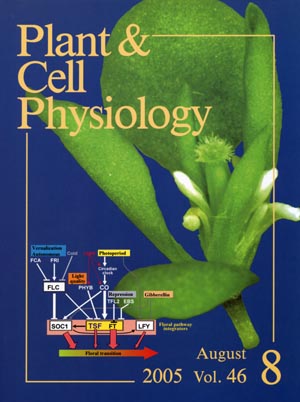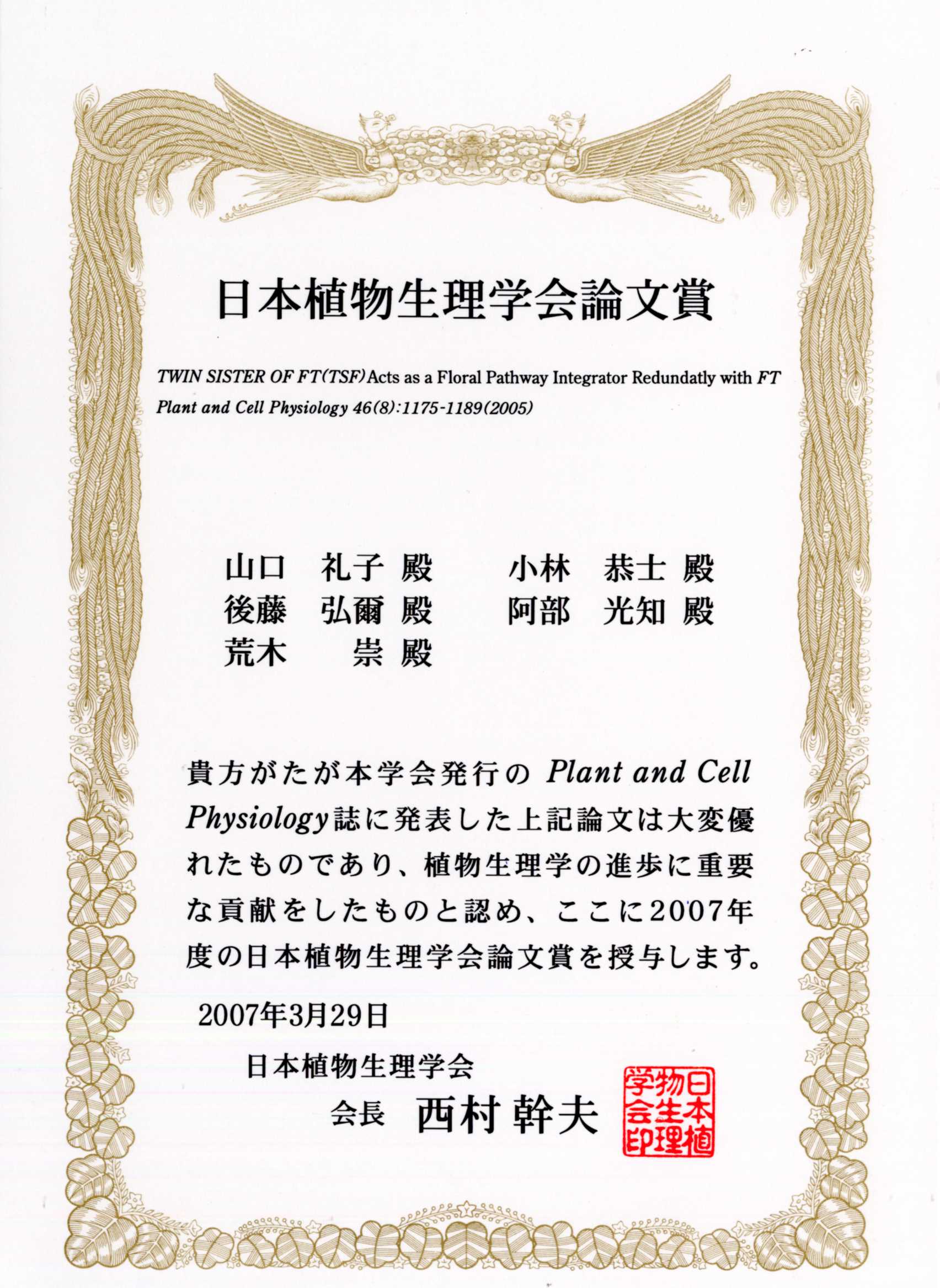Yamaguchi et al. (2005) Plant Cell Physiol. 46 (8), 1175-1189.


表紙(左)と植物生理学会論文賞賞状(右)
Genetic and molecular analyses in Arabidopsis have led to a current model of regulation of floral transition in which four main (photoperiod, vernalization, autonomous, and gibberellin) and additional ("light quality" and "repression") pathways are integrated at the transcriptional regulation of three "floral pathway integrator" genes (FT, LFY, and SOC1). In this issue, Yamaguchi et al. identified TWIN SISTER OF FT (TSF), a closest homolog of FT, as a new member of the floral pathway integrators. They demonstrated that TSF and FT share similar modes of regulation by major genetic pathways and other factors, and that tsf mutation enhances the late-flowering phenotype of ft. TSF and FT have a common tissue-specificity of expression in the phloem, but have distinct spatial patterns (TSF mainly in hypocotyl and FT in cotyledons and leaves). Phloem seems to represent the site where multiple regulatory pathways are integrated at the transcriptional regulation of FT and TSF. That TSF is a floral pathway integrator to promote flowering is demonstrated by an extreme precocious-flowering phenotype of seedlings which constitutively express TSF and another pathway integrator LFY. They make a single terminal flower after forming two up-curled rosette leaves shortly after germination.
